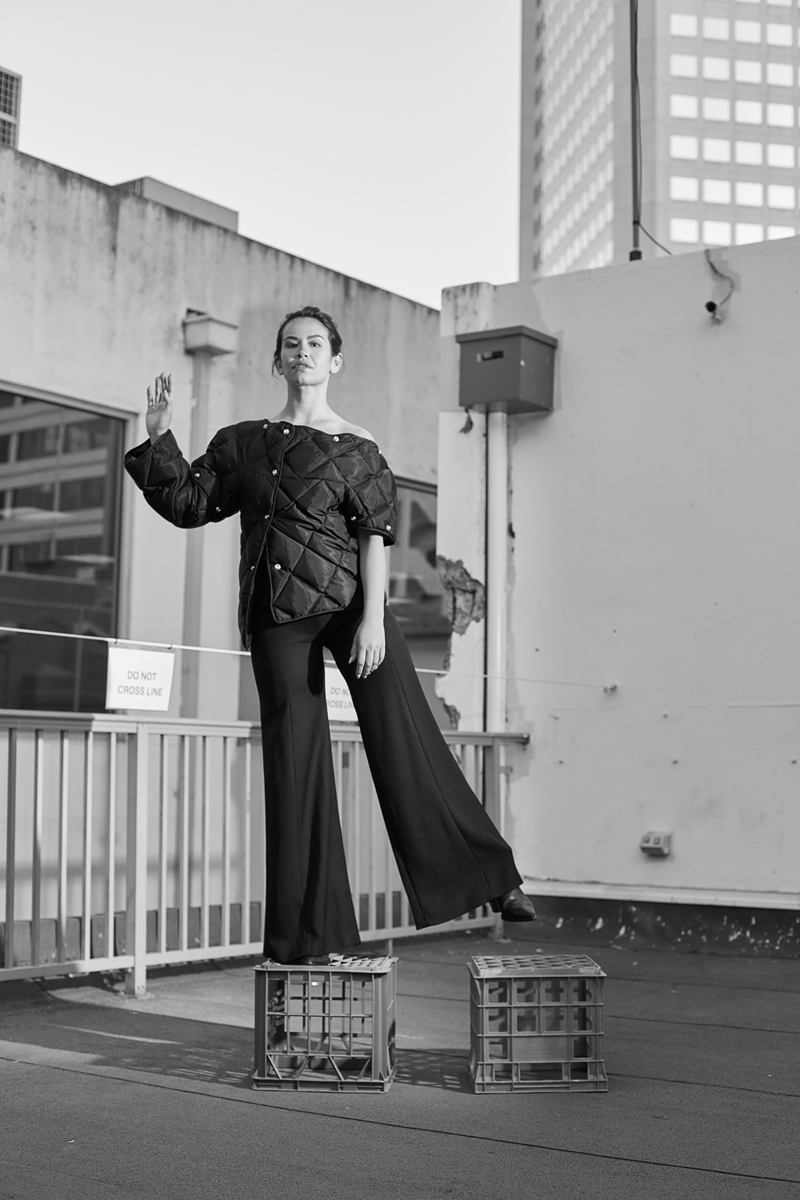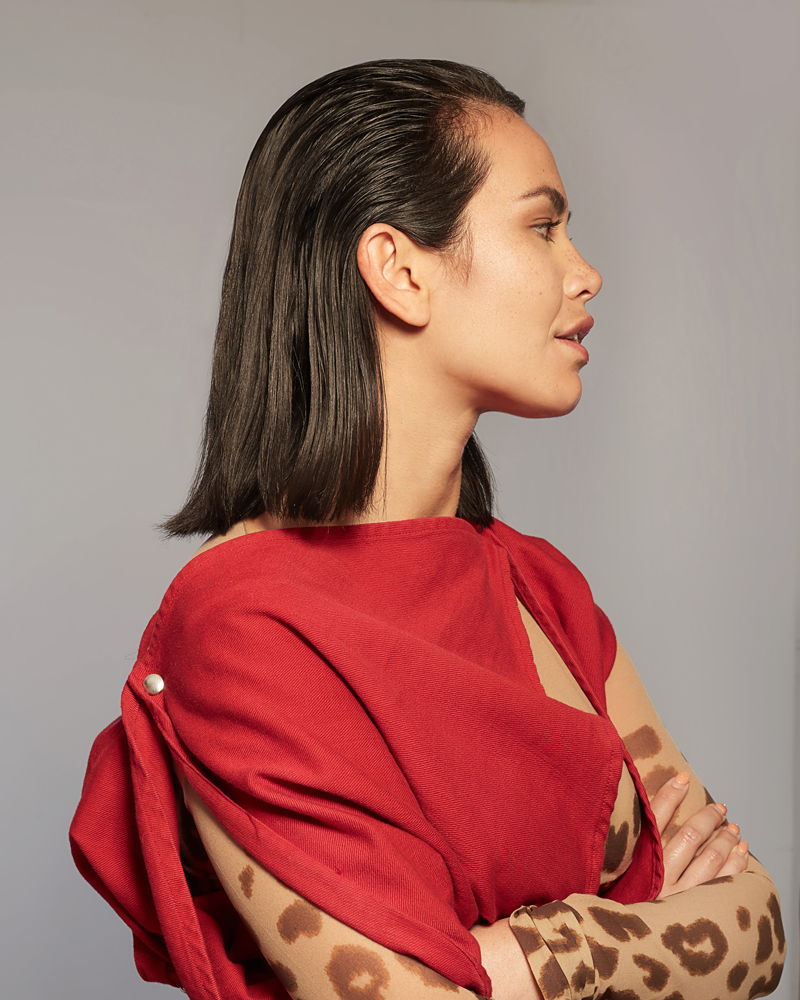Amrita Hepi has always loved to dance. With both Australian Aboriginal and Maori heritage, she grew up in an environment where it was synonymous with cultural celebration and self-expression. Her childhood was stitched together by the promise of weekly ballet classes, community corroborees and Christmas recitals. But as she entered adolescence she began to feel dancing was attracting “too much attention” to her body. Filled with teenage self-consciousness, she moved away from the stage.
But in time, Amrita became increasingly aware of how social pressures, not personal choice, fractured her relationship with dance. It bothered her that something she loved could be distorted, and she began to reconnect with it again through teaching. Her Hollaback classes aim to offer practical dance / life skills, and aim to let participants rediscover something they once loved. She wants to show how movement can be an antidote to shame while she continues to explore society, sexuality and gender through her own dance practice. Today, Amrita’s work moves between art, culture, activism and social commentary, using dance as a vehicle to dissect, discuss and negotiate.
I notice you use the term “dance maker” instead of “choreographer” a lot. Is this on purpose?
I think “dance maker” is more encompassing of my practise. I mean yes, I’m a choreographer, and I wear that hat sometimes, but I feel like the term “choreographer” insists on a hierarchy. I like to call myself a dance maker because I make dance and I dance with people. I’m using the act of dance to make things happen, to make people move and feel okay about moving. The term feels like a more well-rounded way of describing what I do.

You stopped dancing when you were eighteen because you felt like you were being judged. This seems like a really common age for girls to stop dancing. Why do you think this is?
I know right, is it because they get interested in boys? (laughs). Nah, it’s funny, because boys don’t tend to drop their hobbies as much as girls do. I think for girls, as the body changes, society puts this pressure on us to equalise, to normalise, to not draw too much attention to ourselves. That’s what I went through, when I was dancing I felt like I was drawing too much attention to myself, to my hips and my bum… for the first time I felt self-conscious. And at the same time, I was like “I’m never going to be good enough to do this professionally.” I think at that age, girls begin to doubt themselves in so many different ways, so they drop the hobbies that make them feel unsure.
It’s funny though because it’s”okay” to continue playing sports like netball or tennis, but once you hit a certain age dance lessons become redundant. People playing tennis after work don’t think, I’m not going to be a professional so I should stop.
Yeah, which is so weird! I mean, other sports are very much about the body as well, but there’s other objectives, like scoring the most points. With dance, there’s no other objective than the body. And unless you have a community practise – like for me that might be going to corroboree – unless you have that cultural obligation, people lose the motivation and confidence to dance. Within western society, there’s no cultural obligation to dance, unless you’re out at night with the girls, or drunk at a wedding or something. But If western society had some sort of cultural dance practise that was welcoming, or of a ceremonial nature… I reckon more of us would keep dancing. Fuck, I’d love to see that.
So now you teach dance to help people reconnect with their bodies. How do you notice people changing as your classes progress?
It’s really funny you know, at the beginning of a class, I’ll often say, “I give you permission to touch your body.” And people totally freak out. It’s like we need permission to be explorative, aggressive, submissive or confident. Because fuck, you don’t want to come across as being too confident. But by the end of the class, people realise they don’t need permission. They’ll be touching themselves and taking ownership of their body and their movement.
It’s crazy that society makes us feel like we need external permission to touch our own bodies.
Totally. Like, what if the ability to connect with your body wasn’t seen as being strange? I mean, I think it’s becoming more normalised, but that’s a thing I’ve noticed I’ve had to do in my classes, simply so people feel more comfortable. I mean, if we didn’t feel weird about being in touch with our own bodies, I think we would be better at reading the body language of others, we’d know when we were making people feel uncomfortable or comfortable… it would ultimately affect how we come into contact with other people.

As well as being a dancer, you’re also a writer and activist. How does your writing and public speaking intersect with your dancing? Are there some things your dancing says that your words aren’t able to, and vice versa?
For me, the biggest difference between dancing and writing is that dance doesn’t always have to say something specific or metaphorical. The idea that dance can allow me to embody any abstract way of being without having to deal with rules like syntax and grammar… it’s so liberating. Both writing and dancing are processes I use to work shit out. Writing is a good way to plan out a physical action, and dancing helps free the mind, it helps me decide what I might want to put on the page.
Your practice focuses a lot on intersectional themes. Do you think dance in Australia is growing more open to embracing dancers of different culture, class and ethnic background?
Yeah, absolutely. I mean, this last month I’ve been dancing with a West Australian contemporary Indigenous dance company called Ochre, and there’s me, there’s a dancer from India, there’s non-indigenous dancers… there’s no rules anymore. For me, dance has been such a great way to understand myself and my culture, to get past the struggles of history and keep a focus on what utopia might look like.
What’s the best thing about your job?
I love it, I love all of it. I love that dance is an industry, and I love the commercial sector as much as I love the contemporary sector and traditional dance… I fucking love all of it. I love the way dance allows people to move into themselves, to open up. I love that it’s done that to me and I love seeing it do the same thing to others.
Credits
Text Amy Campbell
Photography Amelia J Dowd
Hair and makeup Shella Martin
Art direction Karla Herrera
Assistant Bryan Tang
